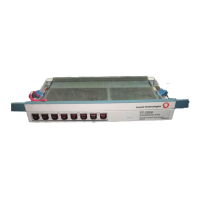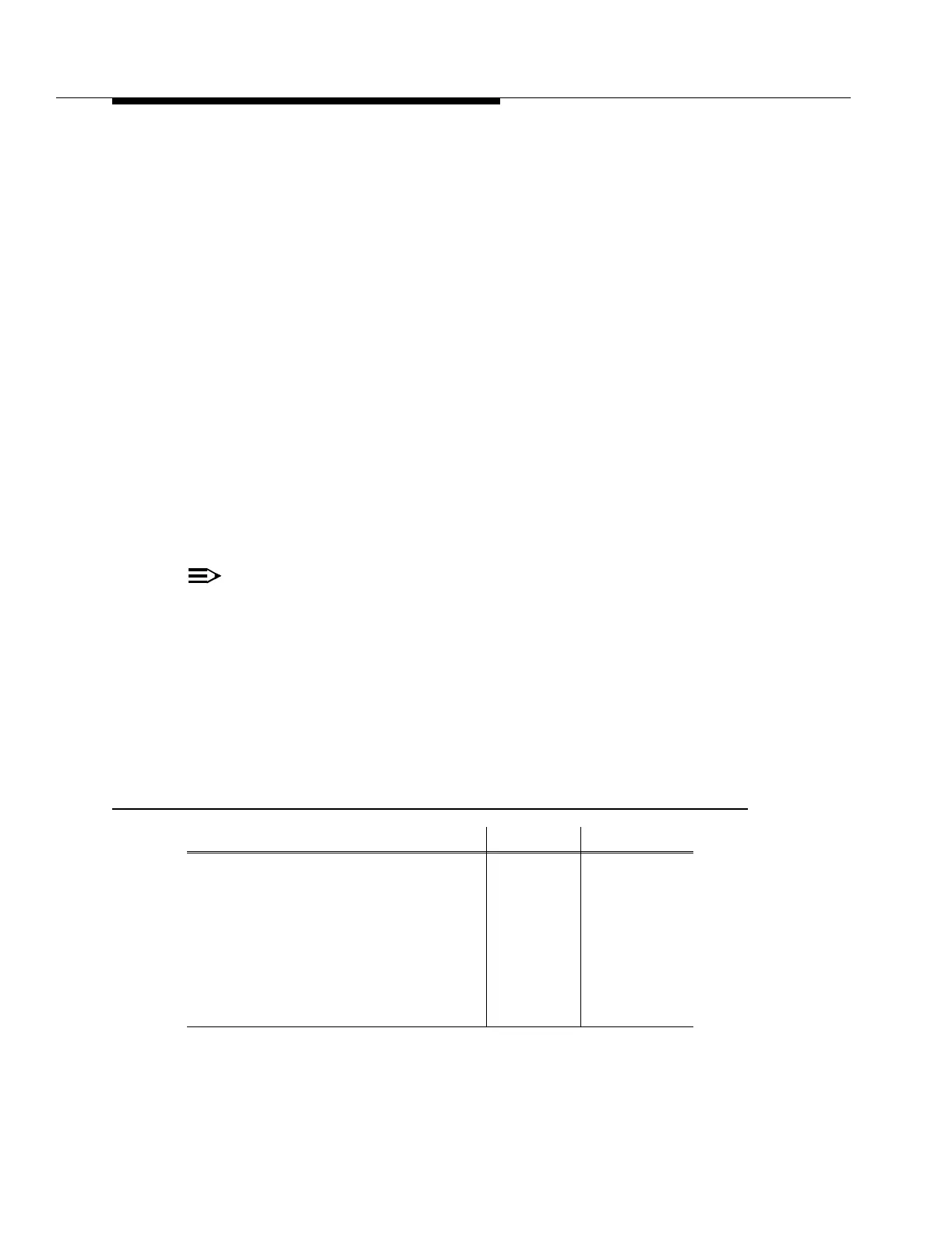Control, Transmission, and Synchronization Interfaces
5-12 Issue 8.0 July 2002
Line Timed Mode 5
The line timed mode of synchronization is available in FT-2000 OC-48 ADR
Release 7.2 and later releases. It provides several benefits which make it superior
to other modes—particularly with FT-2000 nodes that are located in sites without
BITS clocks. More specifically, this mode uses status type messages that are
referred to as "sync-messages." These "sync-messages" are a method by which
nodes in an FT-2000 NE can communicate their synchronization status to other
NEs in the ring. The main advantages provided by "sync-messages" are the
following:
■ The ability to automatically reconfigure how synchronization is obtained,
■ Better reliability for timing distribution.
In terms of operation, the user may choose from which direction the timing is
derived, East(E), West(W), or Auto. West is the default option. If Auto is
optioned—then the particular received signal selected is determined by the
sync-message algorithm. Simply put, the sync message algorithm allows each
node to reconfigure its timing source to derive timing from the best available
source. As a contrast to through timed, whenever line timed makes a
switch/reconfiguration then that event is "non-revertive."
NOTE:
The line timed-auto mode can reconfigure for: (a) two transmission line
failures, (b) a node failure, and (c) failure of an external timing source. The
sync messages, via optical low speed interfaces, supports interworking with
DDM-2000 rings. However, it should not be assumed that the 7.2.0
version's (timing messages or DCC communication) will interwork with
other vendors products.
Table 5-1 lists each line timed "sync-message," its identifying acronym, and
relative quality level.
Table 5-1. Sync-Messages—for Line Timed Mode
Description Acronym Quality Level
PRS Traceable PRS 1
Synchronized - traceability unknown STU 2
Traceable Stratum 2 Holdover ST2 3
Traceable Stratum 3 Holdover ST3 4
Traceable SONET clock self-timed
*
* The SIC and RES messages are not expected in normal FT-2000 operations but must
be supported for future planned interworking applications.
SIC 5
DON'T USE for Sync DUS 6
Reserved for Network Synchronization* RES 7

